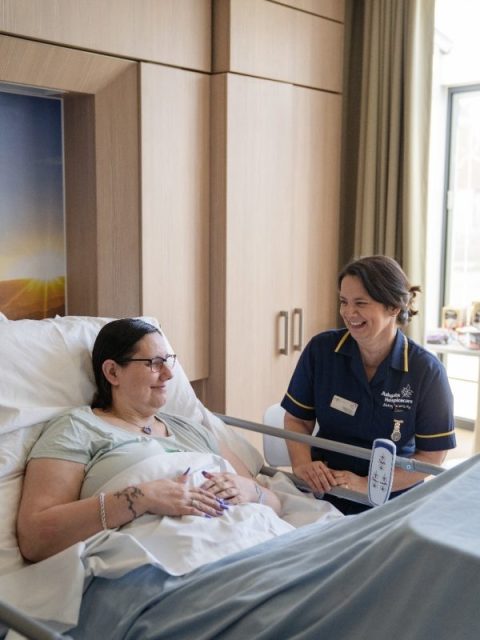
IT Support
17.05.2022
Working in partnership with hospices to provide solutions that drive efficiencies and ultimately improve patient care.
With over 20 years’ experience, from our central hub, we can support any hospice nationwide.
A preferred partner of the HQP (Hospice Procurement Group), we understand the challenges hospices face every day across different departments and work closely with every team to provide solutions through friendly and easy to understand technology advice and support.



We pride ourselves on our excellent levels of service and support
Our case studiesWhat makes us stand out?
Through our strategic planning services and board level reporting support, our exclusive and discounted hospice package can help ensure a hospice has a clear roadmap to continuously improve the quality of their IT services.
HQP (Hospice Quality Partnership) are experts in procurement in the care sector. Founded by hospices, they work on behalf of partners to provide the best value for money products and services that deliver great benefits.
We have a strategic approach to onboarding, and understand the common challenges as well as how best to ensure a swift, seamless and simple transition.
We’ve obtained the ISO 27001 and ISO9001 accreditations and reach NHS security standards with the Data Security and Protection toolkit.
We can provide effective, largely remote support with our dedicated Hospice Service Desk Team which takes into account all user skill levels, without the need for an engineer to be present.
A new hospice reported issues were reduced by 23% after year one of being a customer, from 2300 to 1700 per year, which reduced downtime and increased productivity.
We can provide a solution in SystmOne that gives secure access into clinical systems from wherever your staff may operate.
We can implement simple monitoring systems that can be rolled out in your retail shops to keep track of stock levels.
We understand that hospices have to be compliant in security for CQC governance, and we can help ensure these are achieved.
Providing a roadmap for immediate investment required and a plan for technology improvement over the course of five years to drive efficiencies
We can ensure business continuity and protection against ever evolving cyber threats such as the wannacry attack back in 2017
Going paperless means they can access clinical systems and input important data directly from the patient’s home, which saves time and money and enables more service users to be seen.
By implementing more efficient ways of working and reducing costs where needed, we can ensure that more pence per pound raised is available to go back into the patient care.
Ensuring that the infrastructure within your shops is secure and resilient will help avoid downtime, which will ultimately enable the shops to run more efficiently.
We can ensure patient and clinical data is secure and protected as part of our Managed IT Service, and we can also perform a cyber security review to identify any areas that could potentially be at risk.
We can provide effective, friendly and largely remote support with our dedicated Hospice Service Desk Team which takes into account all levels of IT knowledge, without the need for an engineer to be onsite.
“Having spent 3 years as a Trustee at a local hospice I have seen first-hand the fantastic work that hospices do and the comfort they provide to families at the most difficult of times.
We are committed to helping hospices and charities drive efficiency through technology and ultimately create more resource to provide clinical care that is so important.”
Ian Snow
CEO





Supporting many different charitable, health and well-being organisations
Important considerations for hospices when writing an IT tender
Any experienced IT provider should want to understand your Hospice’s strategy and principles of sustainability. They also need to understand your values, vision, risks, objectives, short – long term goals, financial objectives and governance.
Tenderers can analyse your systems upfront and give an indication as to what they will be looking to do to address any issues along with any project costs.
Include the most recent strategy document or yearly report you’ve published so the IT provider gets an initial understanding of where the hospice is from a strategic perspective.
Every IT company will have a different way of doing things. Don’t make the tender too specific in terms of what you want, as it’s more about what you want to achieve. Leave it quite open to see how the IT provider approaches the tender with their own idea’s.
Set the minimum requirements/expectations as “must haves”. This will allow you to quickly identify providers who cannot deliver what you want, and remove any none-starters as soon as possible.
Clearly state where you believe you can utilise technology and implement digital ways of working to help improve the service you deliver to your patients and service users.
Speak to your key stakeholders to establish a more rounded picture. Hospices have many moving parts, including clinical, retail, fundraising, marketing, finance etc. It’s important to get the view of whats going on across the hospice.
For trustees and senior management teams, credentials and accreditations are key to providing the right level of data security and IT support to a hospice.
Switching providers can be a little daunting as it’s a major decision to take. Request a demonstration of the IT provider’s onboarding process to be sure that the transition process is as bullet proof as possible.

IT Support
17.05.2022

IT Support
04.07.2022


This year we’ve been proudly supporting Ashgate Hospice with their drive to purchase 10 new syringe drivers. Dr Sarah Parnacott, Ashgate Hospice Palliative Care Consultant spoke about the importance of syringe drivers.
“Having ready access to the syringe drivers can make an immediate difference to the symptom management or end of life care to our patients. A syringe driver also frees up time for our nurses to spend time that would otherwise been spent drawing up medication enabling them to provide additional emotional and physical support to our patients and their relatives.”


